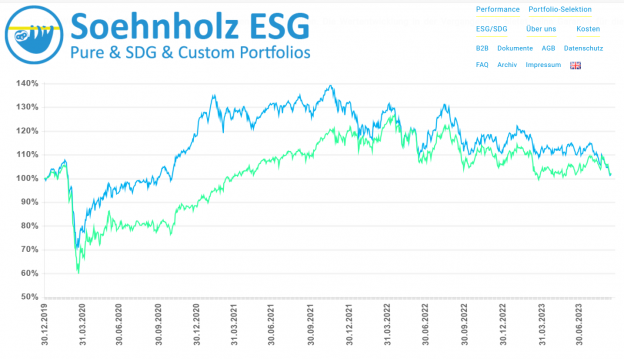Ilustration from Pixabay by Nina Garman
Climate shaming: 11x new research on green technology, sustainable fund labels, sustainable advice, carbon premium, brown profits, green bonds, green growth, green shareholder engagement, climate shaming, optimizations and investment timing (# shows number of SSRN full paper downloads as of April 11th, 2024)
Ecological and social research
Green technology benefits: Economic Impact of Natural Disasters Under the New Normal of Climate Change: The Role of Green Technologies by Nikos Fatouros as of March 18th, 2024 (#9):” In our model of the world economy, raising temperatures are expected to negatively affect consumption as well as increase debt. The most frequently proposed possible solution to climate change, is the de-carbonization of production, by using more “green” technologies. Under “green” technology adaptation, countries would be projected to achieve higher levels of consumption and welfare. This positive effect of more environmentally friendly means of production, tends to be stronger for more developed countries. However, under the assumption of greater technological progress of the “green” sector, our results show that even developing countries would be projected to follow the same path of higher and more sustainable levels of consumption and welfare” (p. 10).
ESG investment research (in: Climate Shaming)
Attractive labels: In labels we trust? The influence of sustainability labels in mutual fund flows by Sofia Brito-Ramos, Maria Céu Cortze Nipe, Svetoslav Covachev, and Florinda Silva as of April 2nd, 2024 (#29): “In Europe, investors can resort to different types of sustainable labels such as GNPO-sponsored labels and ESG ratings from commercial data vendors that assess funds’ sustainability risks. In addition, funds can communicate their sustainability features by including ESG-related designations in the name or self-classifying themselves as article 8 or 9 of the SFDR. … Drawing on a dataset of equity funds sold in Europe … Our initial results document investors‘ preferences for sustainability labels, with GNPO labels (Sö: Government and non-profit organizations) standing out as salient signals. … we find that GNPO labels have an effect on fund flows … Furthermore, this impact is stronger for funds holding other sustainability signals, such as Morningstar top globes, the LCD (Sö: Low Carbon Designation) and an ESG name, suggesting a complementary effect of labels … our results show that the effect of funds being awarded a GNPO label is stronger for the institutional invest segment. The findings show that GNPO labels and SFDR classification are influential for investors’ decisions (p. 23/24). My comment: Maybe I should consider paying for labels for my Article 9 fund. A more detailed comment can be found here Nachhaltigkeitssiegel beim Verkauf von Investmentfonds | CAPinside
(Un-)Sustainable advice? Investing Responsibly: What Drives Preferences for Sustainability and Do Investors Receive Appropriate Investments? by Chris Brooks and Louis Williams as of April 8th, 2024 (#21): „ While investors with stronger desires for sustainability do hold more highly ESG-rated funds on average, the relationship is weaker than might have been expected. Perhaps surprisingly, a majority of clients for whom responsible investing is very important hold some unrated funds, while those for whom it is unimportant nonetheless hold the highly ESG-rated funds in their portfolios. We therefore conclude that more focus on sustainability preferences is required to ensure that retail investors get the portfolios they want” (abstract). My comment: Advisor should develop detailed sustainability policies at least for larger investors, see e.g. DVFA_PRISC_Policy_for_Responsible_Investment_Scoring.pdf (English version available upon demand)
No carbon premium: Carbon Returns Across the Globe by Shaojun Zhang as of April 5th, 2024 (#272): ” Emissions are a weighted sum of firm sales scaled by emission factors and grow almost linearly with firm sales. However, emission data are released at significant lags relative to accounting variables, including sales. After accounting for the data release lag, more carbon-intensive firms underperform relative to less carbon-intensive ones in the U.S. in recent years. International evidence on carbon or green premium is largely absent. The carbon premium documented in previous studies stems from forward-looking bias instead of a true risk premium in ex-ante expected returns” (p. 23).
Profitable brown greening? Paying or Being Paid to be Green? by Rupali Vashisht, Hector Calvo-Pardo, and Jose Olmo as of March 31st, 2024 (#70): “… firms in the S&P 500 index are divided into brown (heavily polluting) and green (less polluting) sectors. In clear contrast with the literature, (i) brown firms pay to be green (i.e.better financial performance translates into higher environmental scores) but green firms appear not to. In addition, (ii) neither brown nor green firms with higher environmental scores perform better financially” (abstract). My comment: If brown and green firms perform the same, why not invest only in green firms?
Resilient green bonds: “My Name Is Bond. Green Bond.” Informational Efficiency of Climate Finance Markets by Marc Gronwald and Sania Wadud as of April 4th, 2024 (#15): “… the degree of informational inefficiency of the green bond market is generally found to be very similar to that of benchmark bond markets such as treasury bond markets. … the degree of inefficiency of the green bond market during the Covid outbreak in 2020 and the inflation shock in 2022/2023 is lower than that of the treasury bond market“ (abstract).
Green growth: Investing in the green economy 2023 – Entering the next phase of growth by Lily Dai, Lee Clements, Edmund Bourne, and Jaakko Kooroshy from FTSE Russell as of Sep. 19th, 2023: “After a downturn in 2022 … Green revenues for listed companies are on track to exceed US$5 trillion by 2025 — doubling in size since the conclusion of the Paris Agreement in 2015 — with market capitalisation of the green economy approaching 10% of the equity market. However, to shift the global economy onto a 1.5°C trajectory, green growth would have to further substantially accelerate with green market capitalisation approximating 20% of global equity markets by 2030” (p. 3).
Impact investment research (in: Climate Shaming)
Short-term impact: The Value Impact of Climate and Non-climate Environmental Shareholder Proposals by Henk Berkman, Jonathan Jona, Joshua Lodge, and Joshua Shemesh as of April 3rd, 2024 (#19): “In this paper, we investigate the value impact of environmental shareholder proposals (ESPs) for a large sample of Russell 3000 firms from 2006 to 2021 … We find that both withdrawn and non-withdrawn climate ESPs have positive CARs (Sö: Cumulative abnormal returns), indicating that management screens value-enhancing climate proposals and rejects value-destroying climate proposals. For non-climate ESPs we find insignificant CARs, suggesting that management does not have an ability to screen non-climate proposals. However, we find that close-call non-climate ESPs that are passed have negative abnormal returns, implying that for non-climate ESPs the original decision by managers not to agree with the activists is supported by the share market” (p. 26).
Climate shaming: Fighting Climate Change Through Shaming by Sharon Yadin as of April 4th, 2024 (#13): “This Book contends that regulators can and should shame companies into climate-responsible behavior by publicizing information on corporate contribution to climate change. Drawing on theories of regulatory shaming and environmental disclosure, the book introduces a “regulatory climate shaming” framework, which utilizes corporate reputational sensitivities and the willingness of stakeholders to hold firms accountable for their actions in the climate crisis context. The book explores the developing landscape of climate shaming practices employed by governmental regulators in various jurisdictions via rankings, ratings, labeling, company reporting, lists, online databases, and other forms of information-sharing regarding corporate climate performance and compliance” (abstract). My comment: Responsilbe Naming and Climate Shaming are adequate investor impact tools in my opinion (my “climate shaming” activities see Engagement report” here FutureVest Equity Sustainable Development Goals R – DE000A2P37T6 – A2P37T)
Other investment research
(Pseudo-)Optimization? Markowitz Portfolio Construction at Seventy by Stephen Boyd, Kasper Johansson, Ronald Kahn, Philipp Schiele, and Thomas Schmelzer as of Feb. 13th, 2024 (#50): “More than seventy years ago Harry Markowitz formulated portfolio construction as an optimization problem that trades off expected return and risk, defined as the standard deviation of the portfolio returns. Since then the method has been extended to include many practical constraints and objective terms, such as transaction cost or leverage limits. Despite several criticisms of Markowitz’s method, for example its sensitivity to poor forecasts of the return statistics, it has become the dominant quantitative method for portfolio construction in practice. In this article we describe an extension of Markowitz’s method that addresses many practical effects and gracefully handles the uncertainty inherent in return statistics forecasting” (abstract). My comment: Extensions of Markowitz methods create complexity but still contain many assumptions/forecasts and are far from solving all potential problems. I prefer very simple optimization and forecast-free approaches, see Das-Soehnholz-ESG-und-SDG-Portfoliobuch.pdf (soehnholzesg.com)
Bad timing? Another Look at Timing the Equity Premiums by Wei Dai and Audrey Dong from Dimensional Fund Advisors as of Nov. 2nd, 2023 (#1642): “We examine strategies that time the market, size, value, and profitability premiums in the US, developed ex US, and emerging markets …. Out of the 720 timing strategies we simulated, the vast majority underperformed relative to staying invested in the long side of the premiums. While 30 strategies delivered promising outperformance at first glance, further analysis shows that their outperformance is very sensitive to specific time periods and parameters for strategy construction”(abstract).
………………………………………………………………………………..
Advert for German investors:
Sponsor my research by investing in and/or recommending my global small cap mutual fund (SFDR Art. 9). The fund focuses on the Sustainable Development Goals and uses separate E, S and G best-in-universe minimum ratings and broad shareholder engagement with currently 27 of 30 companies: FutureVest Equity Sustainable Development Goals R – DE000A2P37T6 – A2P37T or My fund (prof-soehnholz.com).










